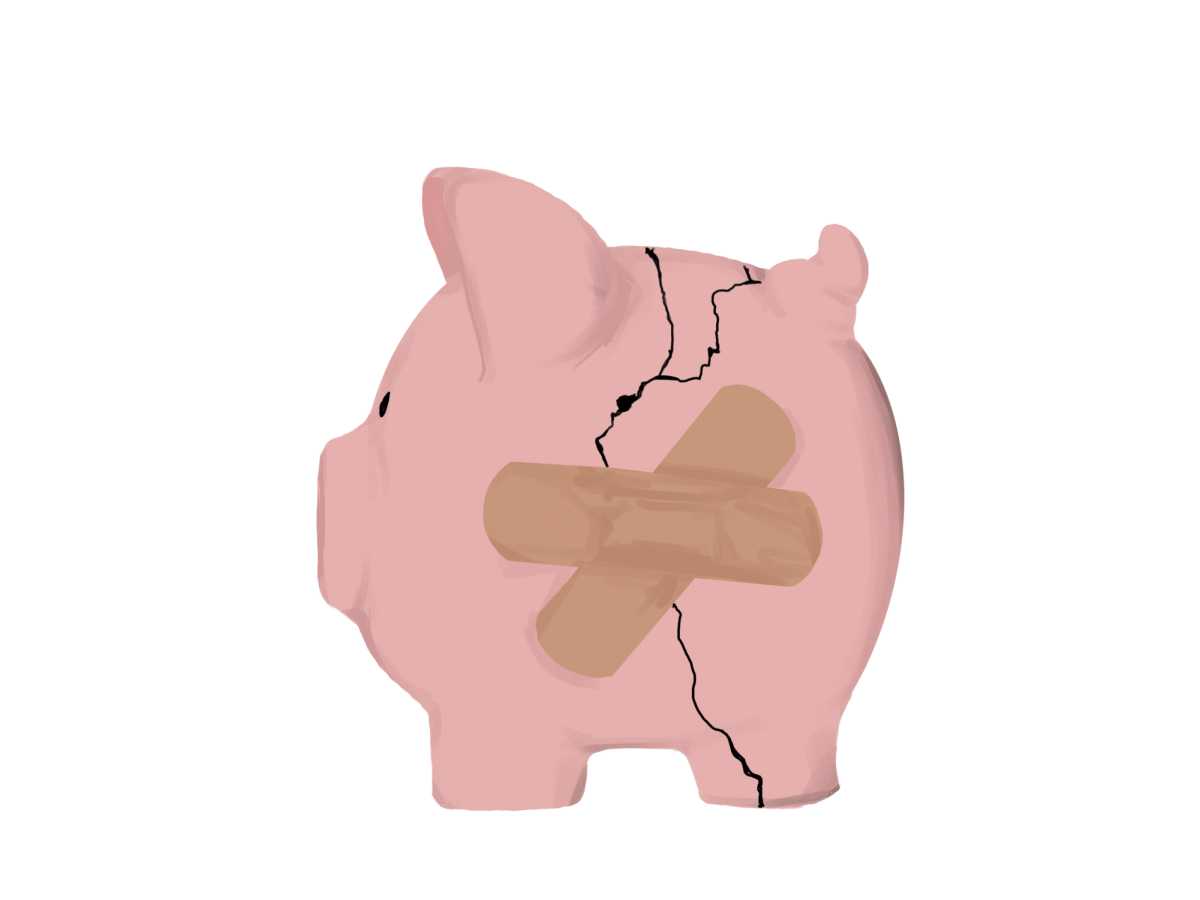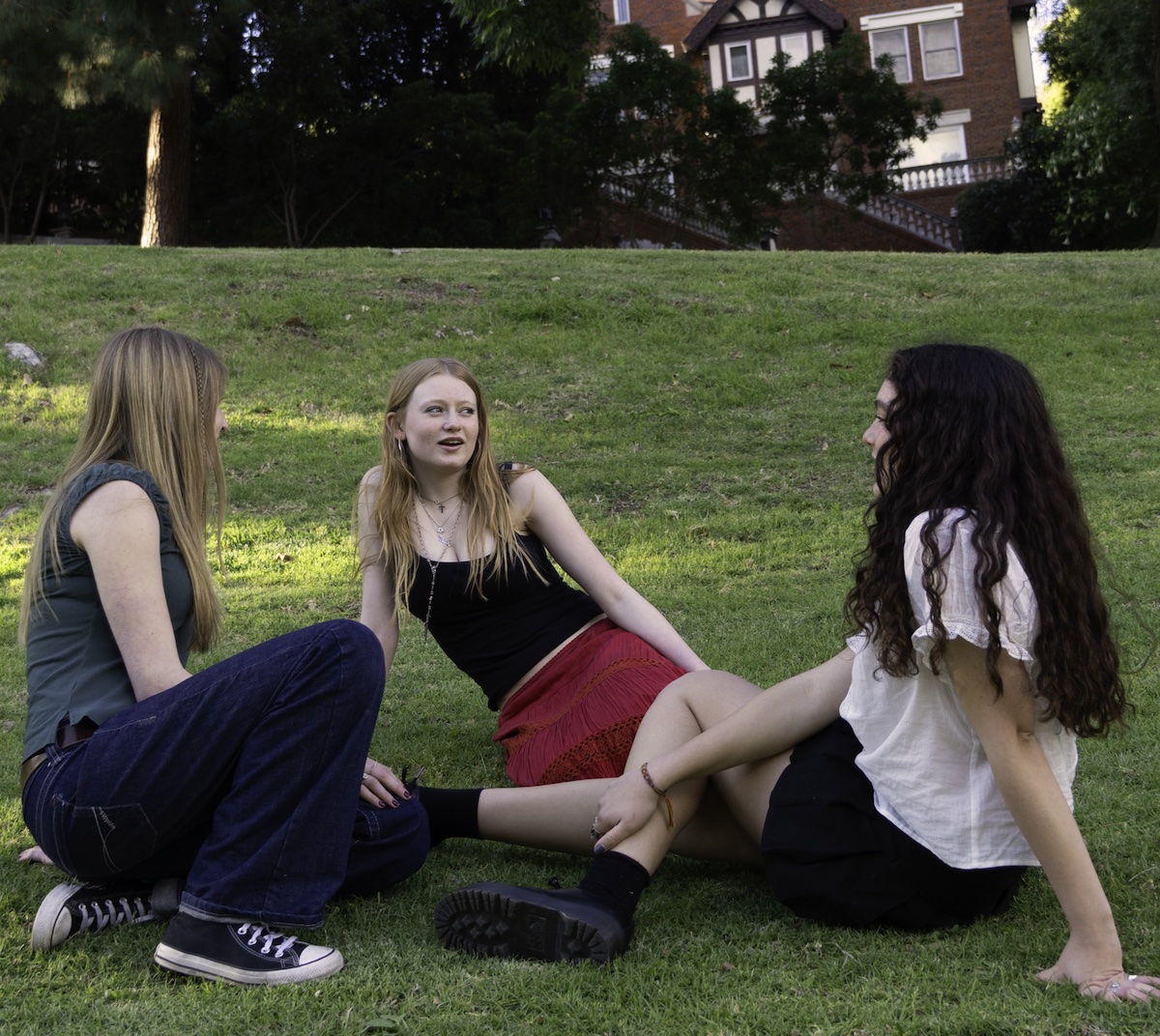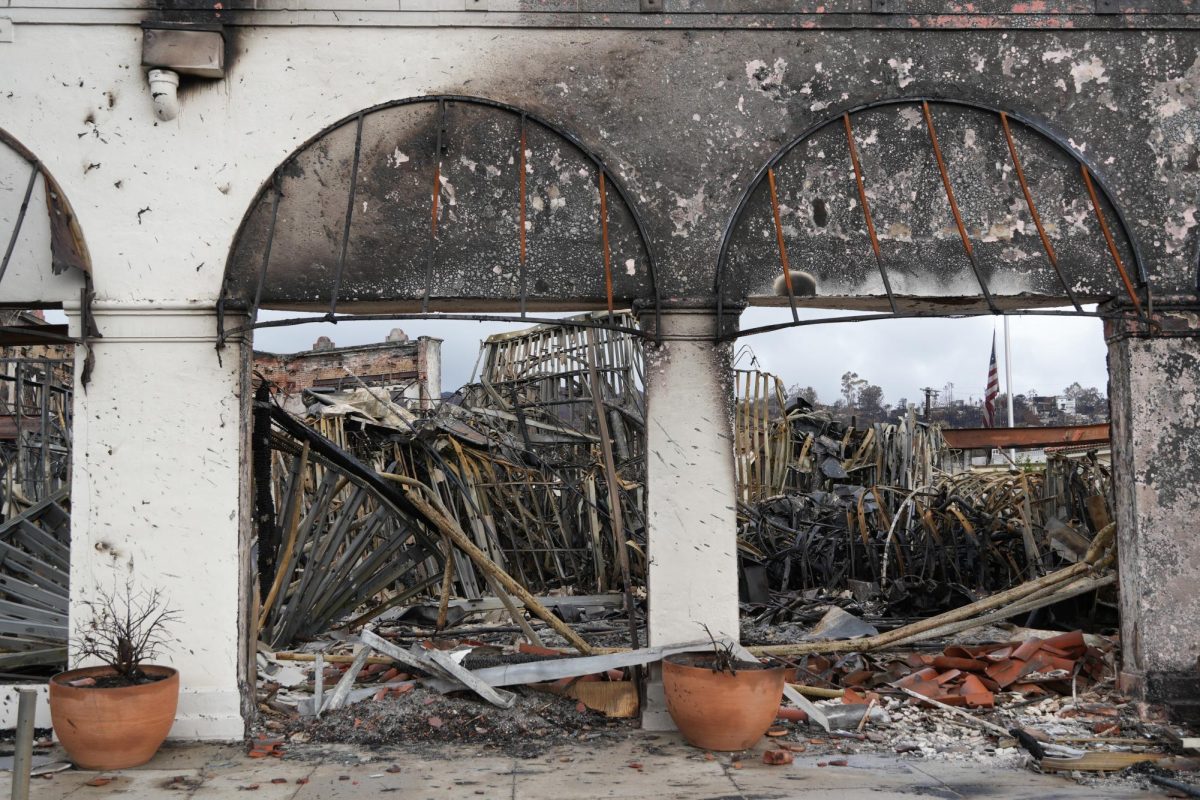By Macy ’22 and Paige ’22
The protests over George Floyd, a black man killed during an arrest, have led to a reckoning with police brutality and racism in the United States. People from all across the country and the world participated in these protests, including many Marlborough students.
History of the Black Lives Matter movement
The protests over the death of George Floyd have called increased attention to the seven-year-old Black Lives Matter movement. Black Lives Matter started as a hashtag in 2013 in response to the acquittal of George Zimmerman, a Florida neighborhood watchman who killed 17-year-old Trayvon Martin in 2012. Alicia Garza, Patrisse Cullors, and Opal Tometi created the hashtag which sparked the movement.
The movement gained national prominence in 2014, when it organized street demonstrations protesting the deaths of Michael Brown, who was killed by a police officer in Missouri, and Eric Garner, who was choked to death by a police officer in New York City.
Since its founding, BLM has organized protests against the killings of numerous unarmed African Americans, and has expanded to 40 chapters worldwide.
The George Floyd protests and the growth of BLM
George Floyd was killed by Officer Derek Chauvin on May 25, 2020 in Minneapolis, Minnesota. Floyd was initially detained because he was suspected of counterfeiting a $20 bill. Chauvin put his knee on Floyd’s neck for seven minutes and 46 seconds while other police officers pinned Floyd down. Floyd said that he could not breathe over 20 times, but Chauvin refused to take his knee off of Floyd’s neck. Chauvin removed his knee one minute and 46 seconds after Floyd became unconscious. Floyd was then taken to a hospital, where he died an hour later.
A video of George Floyd’s death spread over social media, sparking nationwide protests. These protests have occurred in at least 140 cities and the National Guard was deployed in at least 24 states. The day after Floyd’s death all four police officers involved were fired, but they were not yet charged with any crimes.
Derek Chauvin was later charged with second degree murder and the three other officers involved have been charged with aiding and abetting second degree murder. All four of the police officers will be tried in court, tentatively scheduled for March of 2021.
Since the protests over the death of George Floyd, numerous more over many other instances of police brutality have emerged.
In Kenosha Wisconsin, Jacob Blake was shot in the back five times by the police on Aug. 23, paralyzing him. During the protests that ensued, a White teenager shot three protesters with an assault rifle, killing two.
In Rochester, New York, protests have erupted after video footage of the arrest of Daniel Prude was released. Prude died of asphyxiation after being in police custody. Although his death occured in March, it was not widely known about until early September.
According to poll data cited in the New York Times, BLM could be the largest movement in U.S. history. On June 6 alone, over half a million people protested in over 550 locations across the U.S. George Floyd’s death sparked protests against police brutality and racism in at least 40 countries, and on all continents except Antarctica.
Controversy over federal officers in Portland
Federal agents were sent to Portland, Oregon at the beginning of July to quell Black Lives Matter protests under an Executive Order signed by President Donald Trump that allows federal agents to be deployed without the permission of the state. President Trump also deployed federal agents in Chicago, Illinois, and Kansas City, Missouri.
The Governor of Oregon and the Mayor of Portland asked President Trump to remove the federal troops, stating that the troops are only increasing tensions. The federal agents were criticized for the aggressive tactics they used, including beating protesters with batons and pulling protesters into unmarked vehicles.
Federal agencies agreed to gradually remove federal troops from Portland on July 29. Since the federal agents started pulling out of Portland, the protests have been largely peaceful according to a NBC report.

Changes caused by the BLM protests
The protests over the death of George Floyd have had profound effects on society. Here is a list of some of the reforms that have resulted from the protests:
- Two weeks after Floyd’s death, the Minneapolis police department was disbanded.
- Many major cities including New York City, Seattle and Los Angeles have significantly cut or proposed reducing the funding for their police departments.
- Minneapolis, Washington D.C, Chicago and Denver, along with other localities, have banned the use of chokeholds.
- Democrats in Congress have proposed a bill called the Justice in Policing Act of 2020 that would ban chokeholds and no-knock warrants, limit the transfer of military-grade equipment to law enforcement, require most types of police officers to wear body cameras, create a national database on police misconduct and make lynching a federal crime.
- As of June 19, at least 22 cities in the U.S. have taken down or approved the removal of Confederate monuments. Many other countries around the world are also removing or discussing removing problematic statues.
- Mississippi eliminated its state flag that had the Confederate battle emblem embedded in it and is in the process of choosing a new flag.
- The Washington football team formerly known as the Redskins declared that it would change its name and logo.
- Many leaders of important companies have stepped down because of demands for more racial equality in the workplace and allegations of racism, including Reddit co-founder Alexis Ohanian, CrossFit CEO Greg Glassman, New York Times Opinion editor James Bennet, Philadelphia Inquirer Editor Stan Whischnowski and the Adidas head of human resources Karen Parkin.
- Nearly 20% of schools named after people tied to the Confederacy are changing their names.
- Police chiefs in cities like Atlanta, Portland and Louisville have resigned or been fired.
Student Experiences at Protests
Approximately 7,000 protestors in the city of Los Angeles took to the streets on June 6th, the peak of nationwide protests following the death of George Floyd, including many Marlborough students. Polls released by Pew, N.O.R.C, Civis Analytics and the Kaiser Family Foundation showed that between 15-26 million Americans demonstrated about the death of George Floyd and others in March and May. Of the students who responded to a school-wide survey, 70% of Marlborough students have attended a Black Lives Matter protest since May. Marlborough also held protest support events on June 9th and 14th to hand out food and water to protestors, as well as provide materials to make protest signs with. Through these events, students were able to prepare for the protests with members of the community.
“I got to see Dr. Wong and Dr. Crandall there. It was nice to feel connected to school and see people who I consider allies now,” Jalen ’22 said.
In an email sent to her students, History and Social Sciences Instructor Mabel Wong described the protest she attended.
“The protests were peaceful, almost joyous in its spirit of solidarity, when we got there.”
For many at the protests, emotions were high and the energy was palpable.
“I was very emotional being there with my dad and my brother, the two important black men in my life. It was a really empowering experience that I won’t ever forget,” Jalen said.
Many protestors used chanting and posters to convey their message to the world. Jalen held a sign that read: “It’s been 50+ years and MLK is still dreaming.”
This empowered experience was shared among others.
“My sister, my mom and I were yelling at the top of our lungs. I could really feel the power of the emotions everyone felt. People were giving everything they had to be heard,” Anissa ’22 said.
After a long quarantine, Jalen was ready to get out of the house and find unity among other supporters of the Black Lives Matter movement.
“For a long time, I felt isolation and unsettling loneliness with what was happening and I was finally able to do something about it,” Jalen said. I finally knew how it felt to stand up and be physical with everything I believe in with the Black Lives Matter movement.”
Although this spike in Black Lives Matter protests overlaps with coronavirus, a paper released by the National Bureau of Economic Research claimed that there was “no evidence that urban protests reignited COVID-19 case growth following the more than three weeks following protest onset.” For Jalen, the importance of the Black Lives Matter movement trumped the danger of the coronavirus.
“[Coronavirus] wasn’t really on my radar at that moment. I just really wanted to be out protesting. For my family and I, it was so much bigger than coronavirus. We needed to be there.”
In addition to in person protests, the death of George Floyd sparked a huge social media response. There are over 2.5 million posts on Instagram captioned with the #GeorgeFloyd and almost 24 million posts with the #BlackLivesMatter. Jalen found that the social media reaction following Floyd’s death as well as the coronavirus lockdown combined to create a historic call to action in support of the Black Lives Matter movement.
“There weren’t any distractions because of the pandemic. There was no way to escape what was happening. It was all over social media and on every news channel,” Jalen said. If you weren’t seeing what was happening, it had to have been intentional.”
These summer protests had unprecedented high racial diversity. In a June 14th Los Angeles protest that had 30,00 participants, 53% of protestors were white.
“There were people of all races and we were all fighting for the same thing. It was inspiring to see so many people rooting for us,” Anissa said.
The amount of racial diversity at the protests speaks to an unparalleled amount of white support for the protests following the death of George Floyd.
“When our white peers started to notice our pain and why this was pivotal to us, that’s when it became a call to action, not only for the Black community, but for everyone who supports us. That’s when allyship became really important,” Jalen said.
How students can continue to support Black Lives Matter
Supporters of the Black Lives Matter movement are working to keep the momentum of the movement going after its “trending” time in the media. Here’s how you can show continued support to the Black Lives Matter movement:
- Make an ongoing monthly donation to an organization
- Black Lives Matter Global Network (policy reform)
- NAACP (legal and educational funding, political engagement)
- ACLU (policy reform)
- Campaign Zero (police reform)
- The Bail Project (bail fund)
- Assata’s Daughters (community enrichment)
- Black Voters Matter (political engagement)
- Equal Justice Initiative (incarceration reform)
- The Marsha P Johnson Institute (LGBTQ)
- Brave Space Alliance (LGBTQ)
- The Marshall Project (media)
- Sista Afya (women’s mental health)
- The Loveland Foundation (women’s mental health)
- Become a member of an organization to receive news, petitions and be keep up to date on volunteer opportunities
- Join the NAACP
- Join Black Lives Matter
- Join the ACLU
- Sign petitions
- Look on change.org under tags like: black lives matter, racial justice, police brutality, etc. to find trending and recently uploaded petitions
- Look on petitions.whitehouse.gov and browse trending and recently uploaded petitions
- Vote if you can and encourage family and friends to do so as well
- Students who are 16 can pre-register
- Make a conscious effort to purchase from black owned businesses and restaurants
- Self educate with books, podcasts, movies, tv shows and music










